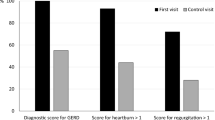Abstract
This study examines the involvement of gastric emptying and mucosal folds in the adaptive cytoprotection of different mild irritants against 100% ethanolinduced gastric mucosal damage. Pre-exposure to either 20% ethanol, 5% NaCl or 0.3M HCl significantly reduced the gastric mucosal damage caused by 100% ethanol in rats. Administration of either one of the three mild irritants increased the basal gastric residual volume and decreased the area occupied by gastric mucosal folds, but only 20% ethanol reduced the gastric emptying rate. Indomethacin (5 mg/kg, s.c.) pretreatment did not affect ethanol ulceration and gastric emptying rate when given by itself, but reversed the flattening of mucosal folds produced by the three mild irritants, and abolished the protective effect of 20% ethanol. These results suggest that the gastric adaptive cytoprotection induced by the three mild irritants acts through luminal dilution of the noxious agent, possibly caused by gastric retention. The reduction of mucosal folds could also contribute to the anti-lesion action of 20% ethanol. It is therefore suggested that the protective actions of the three mild irritants act through different mechanisms.
Similar content being viewed by others
References
Chaudhury TK, Robert A. Prevention by mild irritants of gastric necrosis produced in rats by sodium taurocholate. Dig Dis Sci 1980;25:830–6.
Robert A, Lancaster C, Davis JP, Field SO, Nezamis JE. Distinction between antiulcer effect and cytoprotection. Scand J Gastroenterol 1984;19(Suppl. 101):69–72.
Konturek SJ, Brzozowski T, Piastucki I, Radecki T, Dembinski A, Dembinska-Kiec A. Role of locally generated prostaglandins in adaptive gastric cytoprotection. Dig Dis Sci 1982;27:67–71.
Hawkey CJ, Kemp RT, Walt RP, Bhaskar NK, Davies J, Filipowicz B. Evidence that adaptive cytoprotection in rats is not mediated by prostaglandins. Gastroenterol 1988;94:948–54.
Smith GS, Myers SI, Bartula LL, Miller TA. Adaptive cyto-protection against alcohol injury in the rat stomach is not due to increased prostanoid synthesis. Prostagland 1991;41:207–23.
Pihan G, Szabo S. Protection of gastric mucosa against hypertonic sodium chloride by 16,16-dimethyl prostaglandin E2 or sodium thiosulfate in the rat: evidence for decreased mucosal penetration of damaging agent. Dig Dis Sci 1989;34:1865–72.
Balaa MA. Release of protective products, different from prostaglandins, by rat stomachs exposed to mild irritant. Dig Dis Sci 1989;34:429–35.
Takeuchi K. Ueki S, Okabe S. Importance of gastric motility in the pathogenesis of indomethacin-induced gastric lesions in rats. Dig Dis Sci 1986;31:1114–22.
Mersereau WA, Hinckey EJ. Role of gastric mucosal folds in formation of focal ulcers in the rat. Surgery 1982;91:150–5.
Lancaster C, Nezamis JE, Robert A. Dissolution of gastric mucosal folds does not explain cytoprotection by prostaglandins. Gastroenterol 1982;82:1110.
Cho CH, Chen BW, Hui WM, Lam SK. The influence of acute or chronic nicotine treatment on ethanol-induced gastric mucosal damage in rats. Dig Dis Sci 1990;35:106–12.
Brodie DA, Kundrats SK. Effects of drug on gastric emptying in the rat. Fedn Proc 1965;24:714–8.
Balaa MA, Turnage C. Gastric contents retained in rat stomach following mild irritant exposure contribute to adaptive cytoprotection. Dig Dis Sci 1990;35:1328–33.
Ko JKS, Cho CH, Ogle CW. A correlative study on the mechanism of adaptive cytoprotection against ethanol-induced gastric lesion formation in rats. J Gastroenterol Hepatol 1994;9:492–500.
Starlinger M, Schiessel R, Hung CR, Silen W. H+ back diffusion stimulating gastric mucosal blood flow in the rabbit fundus. Surgery 1981;89:232–6.
Gislason H, Herfjord JK, Guttu K, Grong K, Gronbech JE, Ulvik R, et al. Adaptive protection related to clearance of ethanol in gastric mucosa of cats. Scand J Gastroenterol 1993;28:361–8.
Takeuchi H, Nishiwaki H, Okada M, Okabe S. Mucosal protective action of histamine against lesions induced by HCl in rats: importance of antigastric motor activity mediated by H2-receptors. J Pharmacol Exp Ther 1988;245:632–8.
Garrick T, Minor T, Bauck S, Weiner H, Guth P. Predictable and unpredictable shock stimulates gastric contractility and causes mucosal injury in rats. Behav Neurosci 1989;103:124–30.
McHugh PR, Moran TH. Calories and gastric emptying. A regulatory capacity with implications for feeding. Am J Physiol 1979;235:R254–60.
Williams NS, Miller J, Elashoff J, Meyer JH. Canine resistances to gastric emptying of liquids after ulcer surgery. Dig Dis Sci 1986;31:273–80.
Szabo S. Mechanism of mucosal protection. In: Hollander D, Tarnawski AS, editors. New York: Plenum Press, 1989:49–74.
Author information
Authors and Affiliations
Rights and permissions
About this article
Cite this article
Ko, J.K.S., Cho, C.H., Lam, S.K. et al. The importance of gastric emptying and mucosal folds in the adaptive cytoprotection of mild irritants in rats. Inflamm Res 44, 518–522 (1995). https://doi.org/10.1007/BF01757355
Received:
Revised:
Accepted:
Issue Date:
DOI: https://doi.org/10.1007/BF01757355




